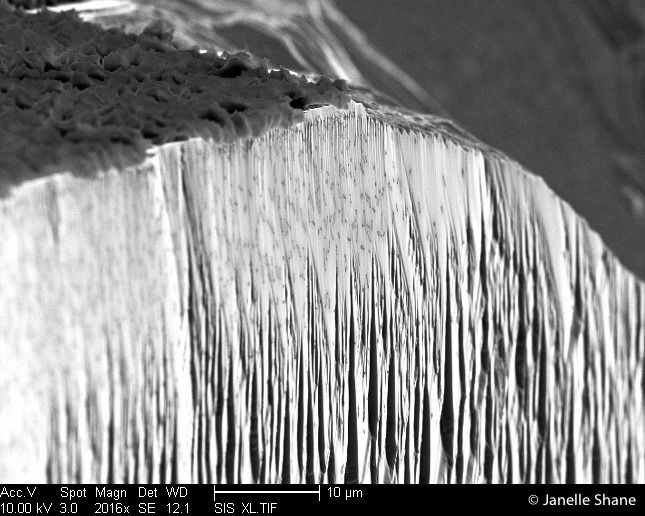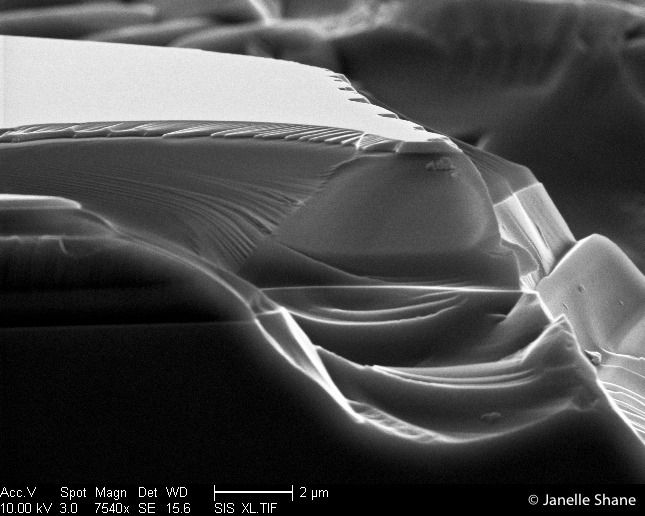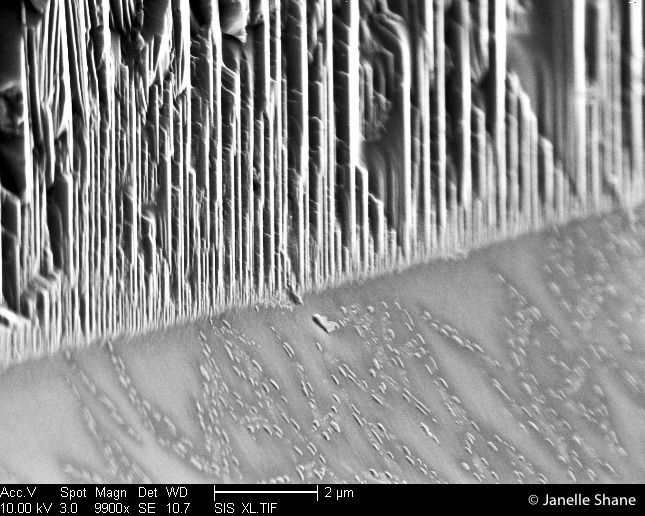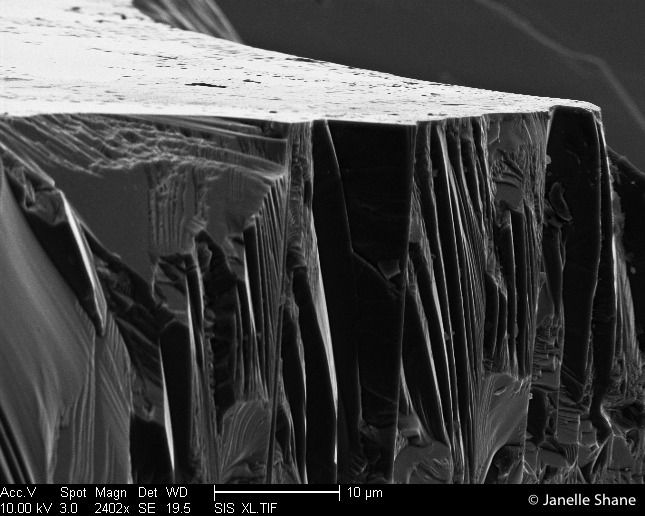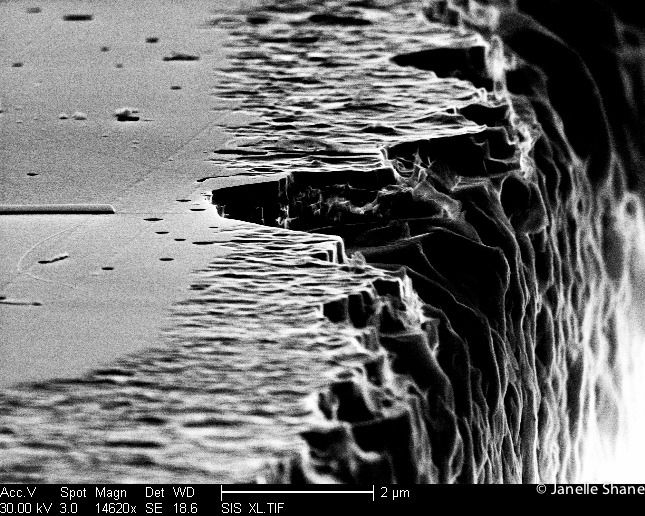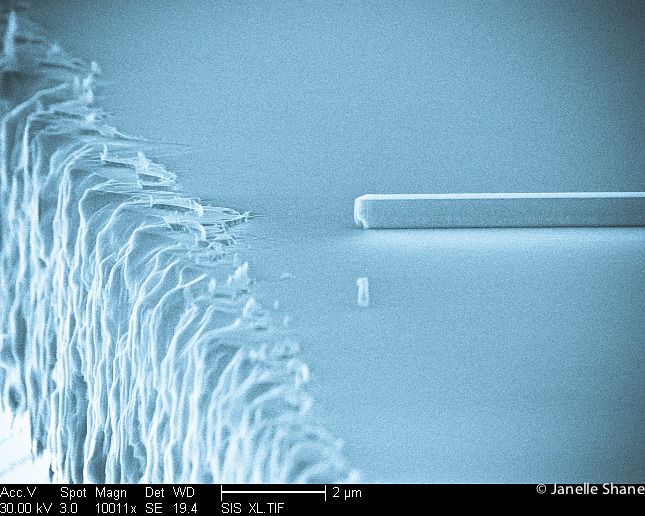The cliffs of insanity? Rising an awe-inspiring 1.5 microns above the
wave-lashed sea (about 1/100 the thickness of a sheet of printer paper), these
cliffs were formed when high-energy plasma ate away a layer of semiconductor.
All that was left behind was this island, protected by a glassy



